火星 ALPO-Japan Latest

Mars Image 2020/04/12(UT)
Gido Weselowski,Clyde Foster,Eric Sussenbach,Niall MacNeill,Ecleido Sousa Azevedo
G.Weselowski,C.Foster,E.Sussenbach,N.MacNeill,E.S.Azevedo
解説(安達)/ Comment by Makoto Adachi
Clyde Foster氏の画像はSPCの内部をよく示している。極付近に暗部があり、興味深い姿を示している。SPCのダークフリンジが
よくわかる。Eric Sussenbach氏はヘラス(Hellas;275~315W,-30~60)を記録している。前日とよく似た姿をし、ヘラスの形がよくわかる。
ヘレスポントス(Hellestontus;325W~345W,-30~-60)の東隣にあるヤオニス(Yaonis;320W,-40)が淡くなっていることから、
この付近に淡いダストストームが発生したようだ。
Niall MacNeill氏は、前日に続いてダストストームを観測した。メリディアニ(Meridiani;0W,-5)付近のダストストームは拡散
したようだ。ターミネーターと重なっているため、詳しくは分からない。一方オーロラ(Aurorae Sinus;53W,-10)とマルガリティファー
(Margaritifer Sinus;23W;-10)との中間部のダストストームは南に伸び、東西方向にはダストベールがその地域を覆った。このダストストーム
よりも北側は広い範囲がダストベールに覆われている。
Ecleido Sousa Azevedo氏はヘラス(Hellas;275~315W,-30~60)付近が広くダストベールに覆われている様子を記録した。
Mr. Clyde Foster's image shows the inside of the SPC well. There is a dark area near the pole, showing an interesting appearance.
The dark fringe of SPC is well understood. Mr. Eric Sussenbach has recorded Hellas (275 ~ 315W, -30 ~ 60). Yaonis (320W, -40) on the
east side of Hellestontus (325W ~ 345W, -30 ~ -60) is pale. From this state, it seems that a faint dust storm has occurred in the vicinity.
Mr. Niall MacNeill continued to observe the dust storm the day before. The dust storm around Meridiani (0W, -5) seems to have spread.
Since it overlaps with the terminator, I do not know the details. On the other hand, the dust storm between Aurorae Sinus (53W, -10)
and Margaritifer Sinus (23W; -10) extends southward, and dust veils cover the area in the east-west direction. To the north of this dust storm,
a large area is covered with dust veils. Mr. Ecleido Sousa Azevedo recorded that the area around Hellas (275 ~ 315W, -30 ~ 60) was
widely covered with dust veils.
(by 5 observation; reported by Makoto Adachi)
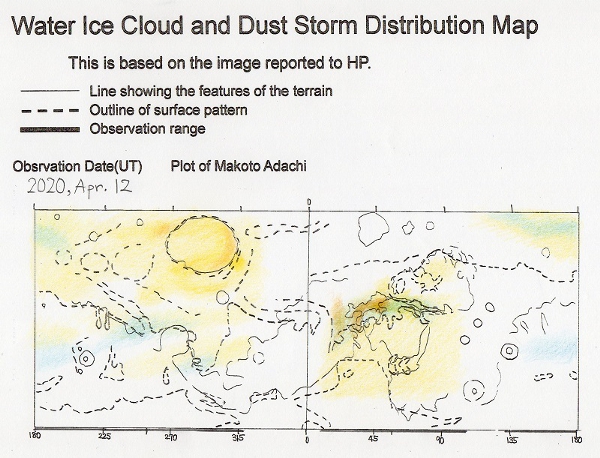 -------------------------------------------------------------------------------------
-------------------------------------------------------------------------------------

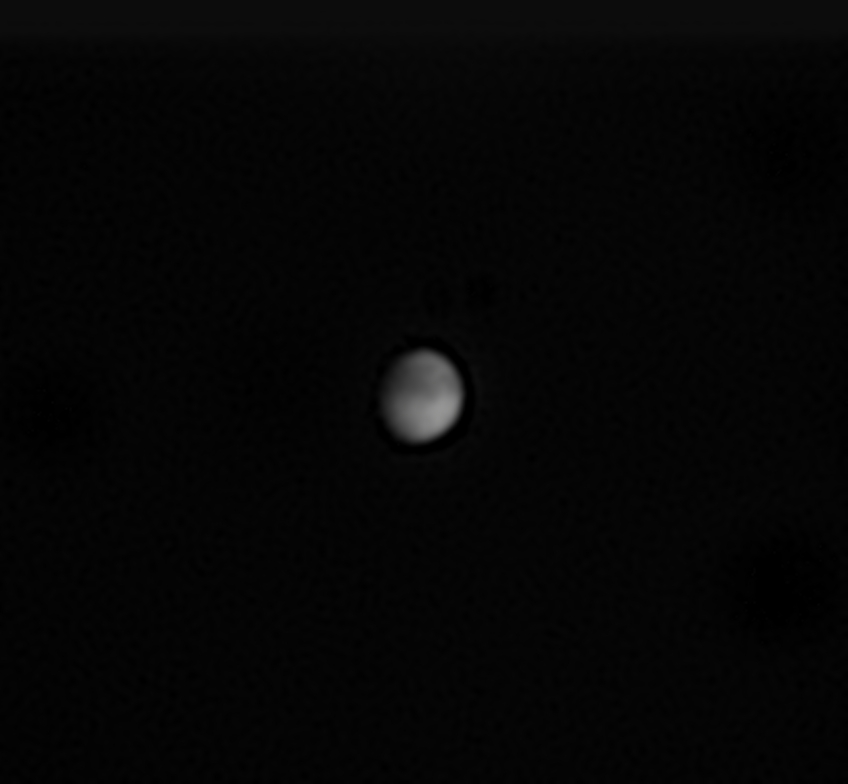 [Gido Weselowski : Bocholt,Germany]
[Gido Weselowski : Bocholt,Germany]
After a number of cloudy mornings,I had this view of Amazonis,
with S Sirenum and M Cimmerium extending across the upper section of the image.
Elysium is quite bright at lower right,with Propontis quite evident at lower centre.
S Gomer is also just visible. Olympus Mons is just on the late afternoon limb at lower left.
Thanks to some input from Niall,I think I am getting a bit of a better grip on the edge artefact,
albeit with a bit of extra time and effort (but I think it is definitely worth it).
That's me done with my processing for the day,so it’s time for a nice Easter lunchtime braai(BBQ) with Marina.
Enjoy your Easter and stay safe.
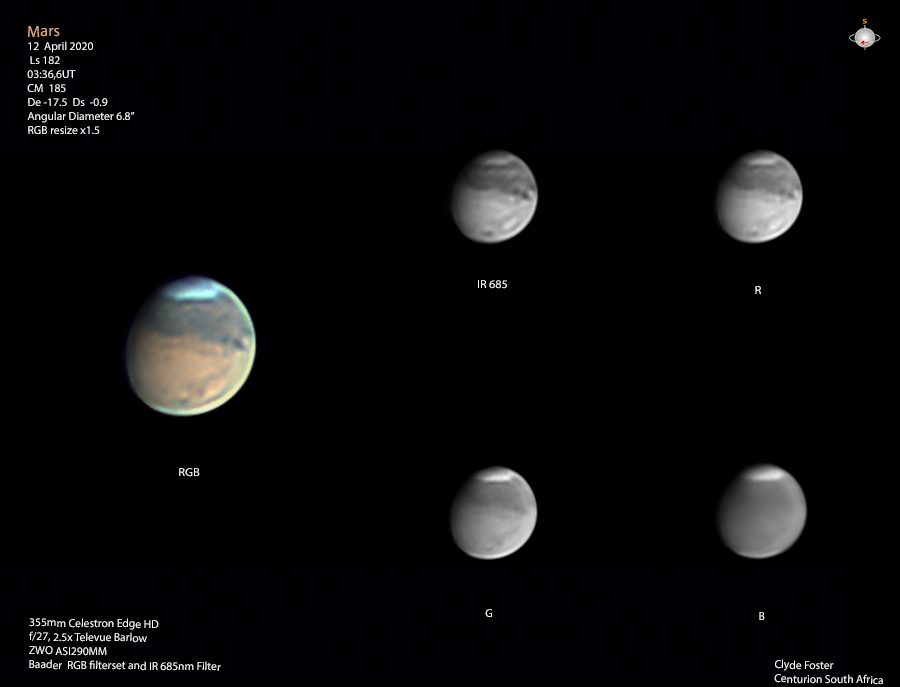 [Clyde Foster:Centurion,South Africa]
[Clyde Foster:Centurion,South Africa]
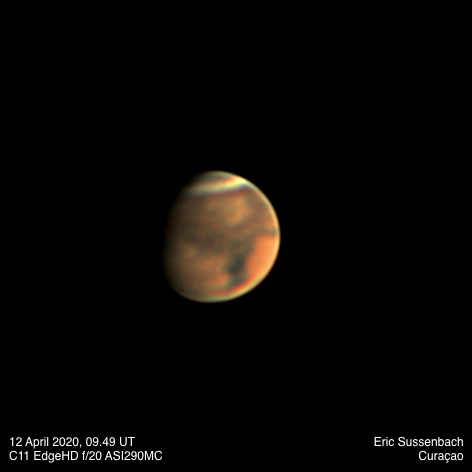 [Eric Sussenbach : [ Willemstad,Curacao (Dutch Caribbean)]
[Eric Sussenbach : [ Willemstad,Curacao (Dutch Caribbean)]
The Argyre Planitia is much more obscured than in my last image and it seems that
there is a general brown murk over that entire region and in fact spreading down over the polar cap.
The cloud to the north is lighter in colour and what I identified yesterday as a small dust cloud in the Mare Erythraeum,
is now brighter,which may of course be the angle of the Sun,
but it is clear it is part of the much larger mass extending equatorially to the terminator.
It would be interesting to know how far it extends in the p direction.
The persistence of these clouds suggests they are more likely to be dust clouds than orographic clouds.
The Nilokeras towards the North Pole at the Central Meridian is much better resolved than yesterday,
as is the Niliacus Lacus on its p side towards the north and the terminator.
 [Niall MacNeill : Wattle Flat,NSW,Australia]
[Niall MacNeill : Wattle Flat,NSW,Australia]
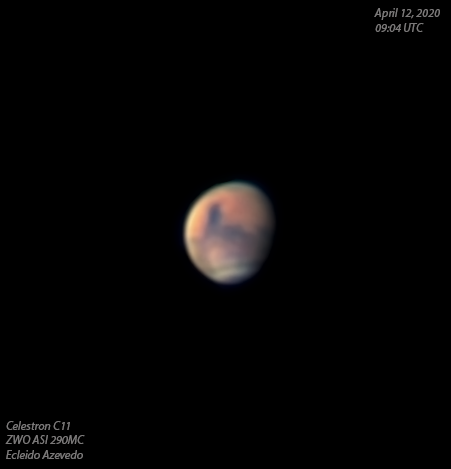 [Ecleido Sousa Azevedo : Areado/MG,Brasil]
[Ecleido Sousa Azevedo : Areado/MG,Brasil]


-------------------------------------------------------------------------------------

[Gido Weselowski : Bocholt,Germany]
[Clyde Foster:Centurion,South Africa]
[Eric Sussenbach : [ Willemstad,Curacao (Dutch Caribbean)]
[Niall MacNeill : Wattle Flat,NSW,Australia]
[Ecleido Sousa Azevedo : Areado/MG,Brasil]
 ALPO-Japan Latest
ALPO-Japan Latest

 Mars Section
Mars Section